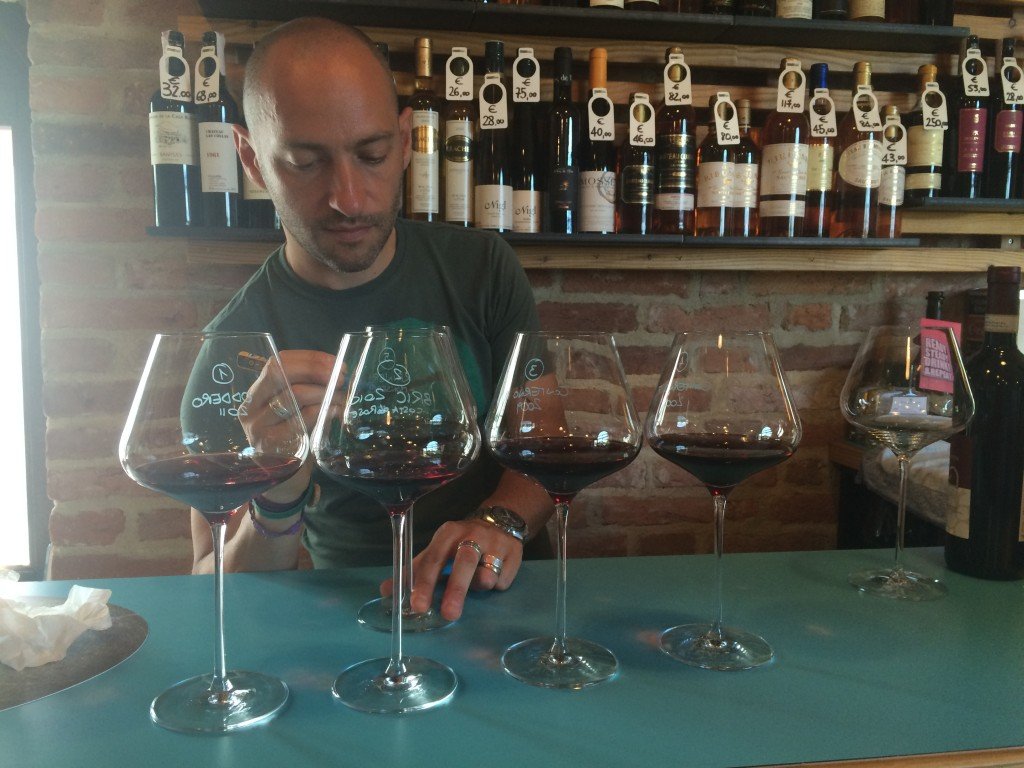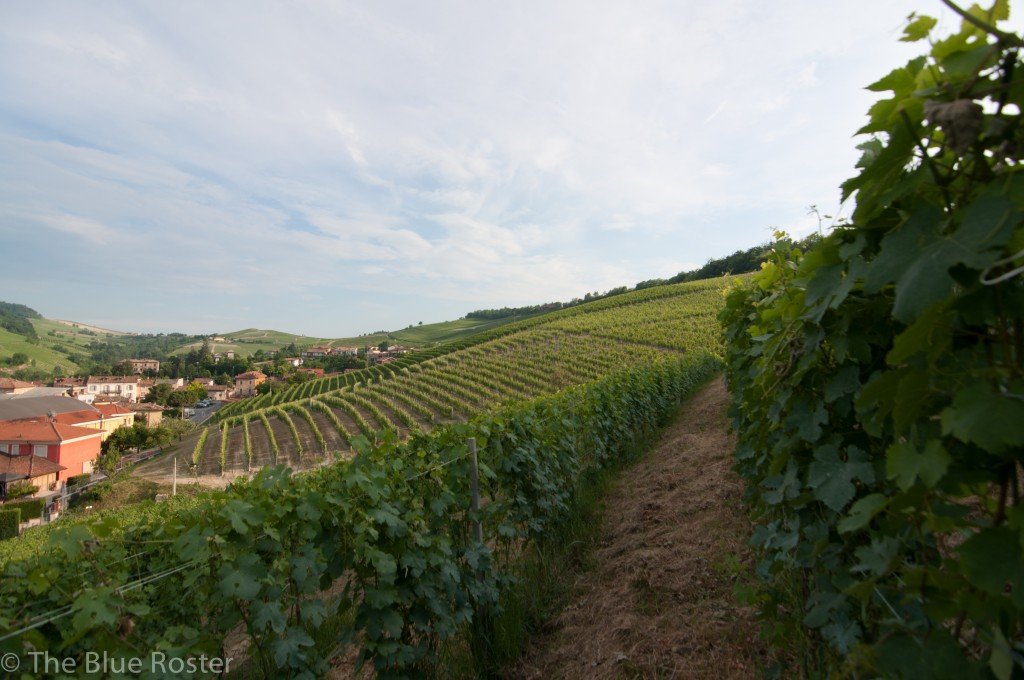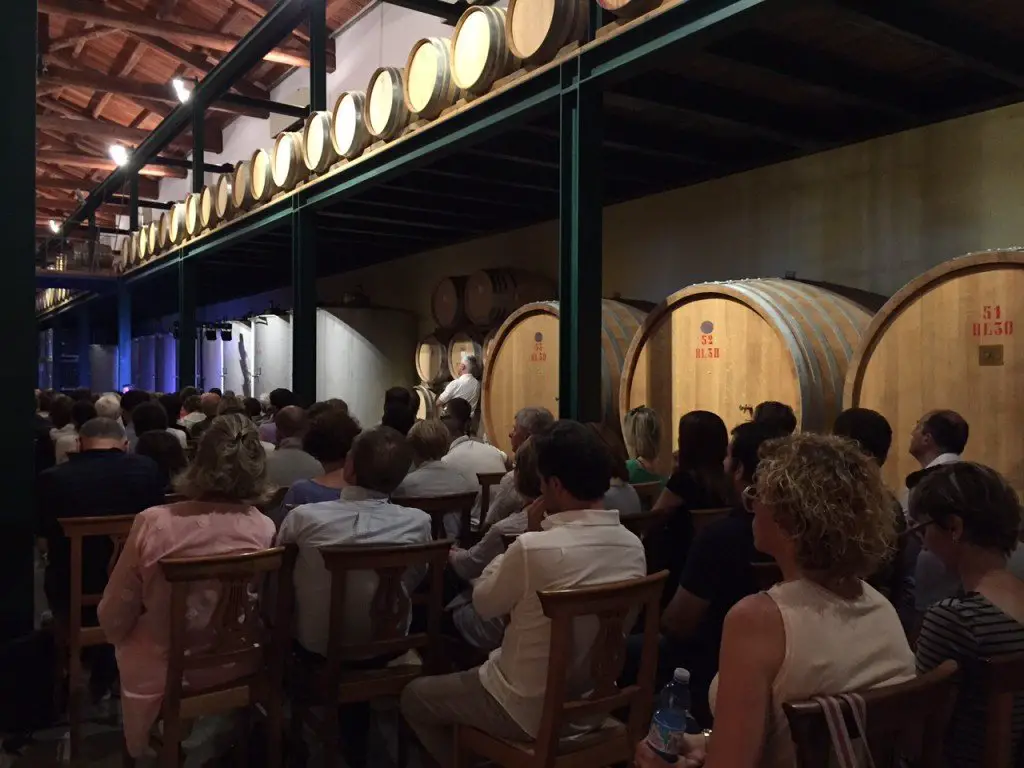Barolo: Good Wine, Good Food, Good People
(Reading Time: [est_time]) “Good wine, good food, good people.” That’s the way La Giolitta Bed & Breakfast's owner and our host Daniella describes her hometown Barolo and other places she enjoys traveling to. It sounds like

(Reading Time: 5 minutes)
“Good wine, good food, good people.” That’s the way La Giolitta Bed & Breakfast’s owner and our host Daniella describes her hometown Barolo and other places she enjoys traveling to. It sounds like a great way to measure a place. There could be worse parameters. Any place where you can eat, drink, and be merry sounds excellent to me.
Barolo is described as “the king of Italian wine”. I found out about it much later in my wine enjoyment. It was introduced to me by the wine app Vivino, which helps people to record and rate wine. The app is very simple, you take a photo of a wine bottle label and the database looks up how other people have rated the wine on a five-point system. One day, while uploading a wine label via a relatively slow internet connection, the app displayed a row of text: “Analyzing… Any minute now… Got better things to do? It’s like waiting for Barolo.” It’s like waiting for Barolo? What the heck is that supposed to mean? After reading up on the wine, I learned that the line implies that Barolo is a complex wine, it usually needs some time to decant, to soften the tannins and to open up the flavors. The complexity of the wine intrigued me. I went straight to a wine shop only to find that Barolo wines were ranked among the more-expensive wines available. A bottle was opened and decanted, right with the first sip, I fell in love. It was like nothing I had ever tasted before. The richness, the complexity, the fruitiness, the length, to me, it was everything a great wine was supposed to be.
When I planned out my transition from a full-time practitioner to a full-time traveler, Italy was high on the list of places to travel. I find myself wanting to return there again and again. This would be my third stint in Italy and naturally the Barolo wine region was a must. The Italy trip came faster than expected. After a two-week adventure with my parents, Charine and I sent my parents off at the Milan airport, picked up a rented car at the airport, and headed for the region of Piedmont where Barolo lies.
After an unexpected detour from Milan to Turin, the capital of Piedmont, we righted ourselves to head southeast into the Barolo wine region. The drive went from the suburbs, industrial zones and flat farmlands of Turin to the hills and medieval villages of Barolo. My breath was taken away as we entered Barolo. The area was filled with hills and vineyards as far as the eyes could see, dotted by occasional medieval hill towns, each complete with their own castle.
We pulled into the town and settled in our guesthouse. Our host Daniella gave us a quick rundown of the towns that belong to the Barolo wine-growing region and different wineries that may be of interest to us. The information that she gave us was by far the most extensive that we came across. Despite the fact that Barolo is a world famous wine region, we found little to no information about traveling through there. Our information consisted of what she gave us plus a few paragraphs in our Lonely Planet guidebook.
Our first stop was at a lovely wine shop that Daniella recommended. It was run by a cheerful Italian man named Stefano, who spoke immaculate English. He gave us a tasting of six different Barolo’s as well as a rundown of the Barolo wine region’s terroir, the different towns that produce the wine, and the different wine styles. Stefano spoke with passion and enthusiasm that made traveling through wine regions so intoxicating (no pun intended). The education was nearly as pleasurable as the wine sampling, and the information he gave us, his patience and service were priceless.
The wines of Barolo are very interesting to me. They are a single-varietal wine made from grapes known as Nebbiolo. After fermentation, the wine is aged for at least three years—two in oak barrels and one in the bottles. For example, we were in Barolo when the “new” vintage was released, that being the wine harvested from the growing season of 2012. As we learned from Stefano and through the tasting, the different towns in the Barolo regions can produce dramatically different wines, in terms of the smell, taste and characteristic. This was very evident when tasting wines from the different towns in the region side by side. To me, wines from Barolo are both elegant and powerful at the same time. The grape Nebbiolo produces a distinct taste that makes it stand out on my palate more than any other wines I have drank.
The next four days consisted of hiking, driving, eating and tasting beautiful wines. Our palates were completely overloaded with the best that mother nature had to offer. Despite having palate fatigue, we were completely enchanted by everyone from the winemakers to the restaurant owners and communal wine shop owners. That is what makes travel special—the interactions with the people and the people of Barolo did not disappoint. They managed to shine even in the presence of world-class food and wine.
We learned a lot in our first visit to a wine region. Profit is very important to keep things going but passion is the fuel of many of these small wineries as most produce less than 40,000 bottles per year. The food and wine were magnificent but it was the characters that made the trip that much more special. From then on we used Daniella’s quote to evaluate a place, “Good wine, good food, good people.”
Dr Matthew Horkey
CHARINE
I love wine. Matt loooovvveees wine. Sometimes, writing, without the aid of paralinguistic to inflect words, is a limited form when it comes to expressing the magnitude of a feeling; or maybe and clearly, I’m more of a talker and not a fantastic writer. The point is if you really have to compare and deduce, Matt loves wine more than I do. To him: wine is the beginning, the end, and everything in between. While Matt empties out two bottles of wine every day (true story), I usually don’t mind G&T for breakfast, champagne for lunch, and whiskey as a nightcap. To me: wine is like food and all things intoxicating—I love them all with the same intensity and for a similar reason.
With what intensity and for what reason? With the same intensity I have towards travel and vitality. For the reason that the constant pursuit of wine experiences and understanding is a form of iteration, a commitment, and a way to learn and practice specific skills. By skills, I really don’t mean the conspicuous wine appreciation or quaffing 25 alcoholic beverages without having someone to scrape you off the floor at the end of the evening. Wine, by virtue of its complexity and aliveness, is an outlet for us to be fully present with our human senses. It creates a cerebral space for us to observe, to think and to analyze in ways that most of our days don’t stimulate us to. Wine appreciation can help us grow the muscle that challenges our preconceived ideas and builds the openness to try new things. It is a creative enabler that helps us to articulate nuances and details, and even to subjugate our diffidence and fear of looking bad. It’s okay that the wine from Chateau Mooboolooloo tastes like frozen strawberry or orange popsicle to you, and only to you. It is okay to express fondness towards wines that smell like wet stones. As the Latin phrase goes: “In Vino Veritas”, meaning in wine there is truth, we all have our own truth. For the love of wine and in the name of wine, say what you think, share what you feel, there is no right answer, and no space for anyone to say the wrong thing or look silly and bad.
Soil, sunlight, water, and time are the elements required for the birth of wine; but it is man’s imagination, hard work and patience that make an outstanding wine. It is the incessantly harmonious dance between personal passion and universal trust—in the environment and process—that fills a bottle of living being with the poetic charge of nature. A bottle of living being that constantly breathes and develops—how a bottle of wine is stored and served; when it is open; with whom you share the bottle with, and the general context you are in can drastically change the smell, taste, and the entire experience. Sometimes, I imagine drinking wine as a profound, inner practice. You need to be fully present and surrender all your senses and your mind to experience it. From there, you can train yourself to live every moment of your life with the same presence and mindfulness.
The days in Barolo have left a deep question for me: how do I create and live a congruent life?
On our second night in the Barolo town, our host Daniella invited us to a jazz concert and party at one of the nearby wineries. Saxophone quartet performance in a wine cellar followed by tapas and wine tasting at a hall on the top of a hill. All for free? YES PLEASE! The people from the Barolo wine towns drink, eat (they sometimes cook their pasta and meat in Barolo), and talk Barolo, their lives fully intertwined with this wine pedigree. I can only hope that one day, I will learn to focus my energy with the same degree of passion and generosity on one entity; but for now, I think we can all benefit tremendously from asking why we do or like certain things.
Grape fun so wine not, much love – Charine
Related
Barbaresco: People of the Vine
Exotic Wine Travel, Episode 21: Italian Wine – Nebbiolo from Gattinara
Disclaimer: The ideas expressed in this article are personal opinions and are not associated with any sponsors or business promotions.




